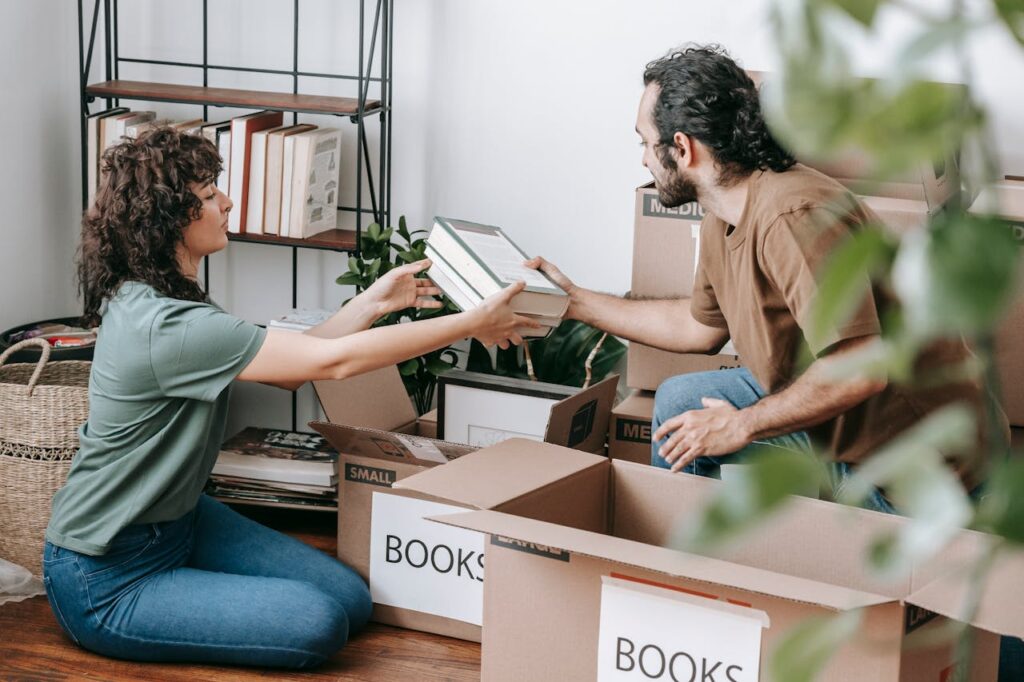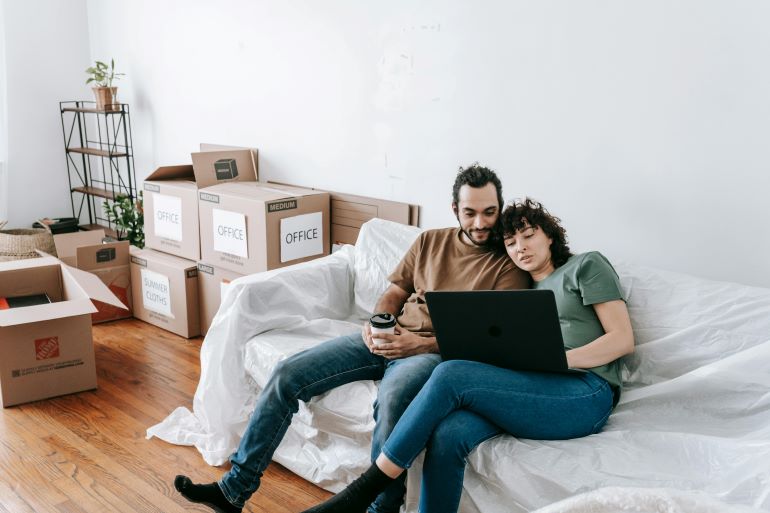Moving day might steal the spotlight, but let’s be honest, the real chaos begins once you’ve arrived at your new home and you’re staring at a sea of mystery boxes. The kitchen tools are mixed in with bathroom supplies, the remote is nowhere to be found, and somehow the coffee maker ended up in a box labeled ‘misc.’ Sound familiar? The good news? A little bit of planning can go a long way. With smart labeling systems, you can take the guesswork out of unpacking, keep your essentials within reach, and skip that dreaded ‘Where do I even start?’ moment entirely.
Ready to make unpacking feel effortless? We’ll walk you through every step – from planning your categories and picking the right colors to labeling strategies that actually work when the moving dust settles.
Why Smart Labeling Systems Matter When You Move
Most people think unpacking is just the reverse of packing, but that couldn’t be further from the truth. When everything’s boxed up without a plan, unpacking turns into a frustrating scavenger hunt. You’re opening box after box, trying to remember what went where, and wasting valuable time you could be spending actually settling in.
On the other hand, when organizing your boxes with a purpose, you’re giving yourself a clear roadmap for move-in day. Whether you’re unloading everything yourself or working with movers, having clearly marked boxes means things end up in the right rooms without you having to micromanage every step.
Even better? A well-thought-out system helps you prioritize. You’ll know exactly which boxes to open first, which ones can wait, and where your must-haves are hiding.
How to Create an Effective Smart Labeling System
To actually make unpacking smooth, you need a structure that’s simple to use but easy to follow under pressure, especially when you’re tired and just want to find your toothbrush or coffee filters.
Here’s how to build smart labeling systems that actually work:
1. Use Clear Labeling Categories
Start by labeling based on rooms, ‘kitchen,’ ‘bathroom,’ ‘main bedroom,’ etc. That way, your boxes get dropped in the right space from the start.
But don’t stop there.
Add extra context like the item type or purpose, like:
- ‘Kitchen – Fragile – Glassware’
- ‘Living Room – Cords & Tech’
- ‘Bathroom – Daily Use’
This helps you identify priority boxes quickly and unpack smarter.
2. Color-Code for Visual Clarity
Assign a different color to each room or category. You can use colored duct tape, stickers, or even colored paper taped to the sides of each box.
For example:
- Red = Kitchen
- Blue = Bedroom
- Green = Bathroom
This visual cue makes it easy for movers (or your helpful friends) to drop things where they belong without having to read every label.
3. Number Your Boxes and Track Them
Go one step further by numbering your boxes and keeping a running list of what’s in each one. You can do this with a simple notebook, spreadsheet, or even a moving app.
Here’s an example:
- Box #01 – Kitchen – Dishes
- Box #02 – Kitchen – Pantry Staples
- Box #03 – Living Room – Books
This also helps you notice if something goes missing, and it’ll give you peace of mind knowing where everything is before you even start unpacking.

Ensuring you only take what’s completely vital will make not only for effective downsizing but also for less clutter.
Labeling Tips to Simplify Unpacking Specific Items
Even with a solid labeling system in place, certain types of items (like fragile items) can still cause headaches if not labeled thoughtfully. Here’s how to handle the trickier stuff.
1. Kitchen, Bathroom, and Day-One Essentials
Designate a few boxes as your Open First or Essentials boxes. These should include items you’ll need within the first 24–48 hours in your new home, think toiletries, basic cookware, chargers, medication, a few clean towels, and maybe even your favorite coffee mug.
Label them clearly and make them stand out with a bold color or symbol. You’ll thank yourself when you don’t have to tear through 10 boxes just to find a toothbrush.
2. Furniture and Fragile Items
Furniture parts and fragile items deserve extra attention. Always label which room the furniture belongs to and include a brief note on what’s inside the box (e.g., Desk – Legs & Bolts or Dining Table – Glass Top – Fragile).
Also, be sure to keep any small hardware (screws, bolts, brackets) in clearly marked bags, and tape them to the corresponding piece or label the bag to match the box it goes with. And before you even create smart labeling systems for your furniture, it helps to know the proper way to pack furniture. That way, everything arrives safely and in one piece, ready to be unboxed and reassembled with minimal stress.
Digital vs. Manual Labeling Systems: Which Works Better?
Not all labeling methods are created equal. Some people swear by colored tape and permanent markers, while others go all-in with spreadsheets and mobile apps. So, which one’s better?
Honestly, it depends on your move (and your personality).
1. Manual Systems (Stickers, Tape, Sharpies)
Manual labeling is simple, low-cost, and doesn’t require any tech. Just grab a Sharpie, some colored tape, and start labeling directly on the boxes.
Pros:
- Inexpensive and easy to set up
- No learning curve
- Works well for small moves or fewer boxes
Cons:
- Harder to track contents without writing everything on the box
- If the label fades or the box gets damaged, you might lose context
2. Digital Options (QR Codes, Inventory Apps)
If you’re a fan of organization or moving a large household, digital labeling systems offer more control. You can track every box, what’s inside, and where it goes with just a few taps on your phone.
Some people go a step further and use QR code labels that link to a full box inventory. Apps like Sortly, Moving Van, or even Google Sheets make this process easier than ever.
Pros:
- Centralized inventory of all your boxes
- Easy to search and share with others
- Less writing on the boxes themselves
Cons:
- Requires a bit more setup
- Not ideal if you’re in a rush or not tech-savvy
Our Take? Use Both
If you want to get the best of both worlds, combine them. Use colors and handwritten labels for quick identification, and back it up with a digital list for easy tracking. That way, you’re covered no matter how hectic move-in day gets.
Make Unpacking the Easiest Part of Your Move
Most people dread unpacking because they assume it has to be messy, chaotic, and time-consuming, but it doesn’t have to be that way. With smart labeling systems in place, unpacking becomes less of a chore and more of a straightforward, even satisfying, process. You’ll know what’s where, what to open first, and where each box belongs. No more mystery boxes. No more misplaced essentials. Just a clear plan that helps you move into your new space with less stress and more ease. Because let’s face it, unpacking should be exciting. And with the right system, it absolutely can be.
